Under the condition shown in figure. Find out the minimum value of horizontal force F2 on pulley, which can be applied without causing any motion (assume pulley& strings are light)

For minimum F2 tendency of motion is in the rightward direction
FBD of 1kg+2kg
f1_(1)=0.1×10=1N

f2)L=0.2×20=4N
8−J−4−F22=0
F2=6N
Topper's Solved these Questions
- BOOK - BANSALCHAPTER - TEST PAPERSEXERCISE - PHYSICS PART (A)32videos
TEST PAPERS
- BOOK - BANSALCHAPTER - TEST PAPERSEXERCISE - PHYSICS PART (B)3videos
TEST PAPERS
- BOOK - BANSALCHAPTER - TEST PAPERSEXERCISE - PHYSICS PART- C4videos
TEST PAPERS
- BOOK - BANSALCHAPTER - SEMICONDUCTORSEXERCISE - CBSE Question32videos
SEMICONDUCTORS
Similar Questions
In figure the tension in the diagram string is 60N
(a) Find the magnitude of the horizontal force F1 and F2 that must be applied to hold the system In the position shown.
(b) What is the weight of the suspended block?
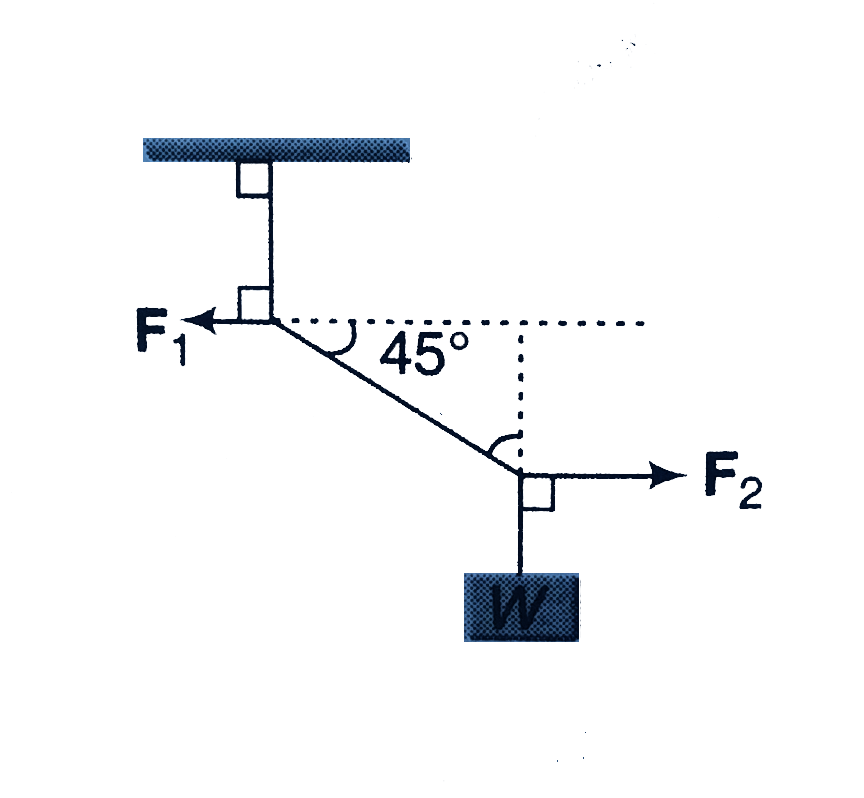 View Solution
View SolutionConsider the situation shown in the figure. A mass is hanging from a inextensible string which is passing over a pulley. The pulley itself is attached to a massless spring of stiffness k as shown in the figure. Find the time period of vertical oscillations of mass m if pulley is slightly displaced from its mean position. Assume that string does not slip over pulley.
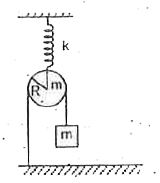 View Solution
View Solution
Knowledge Check
- Question 1 - Select One
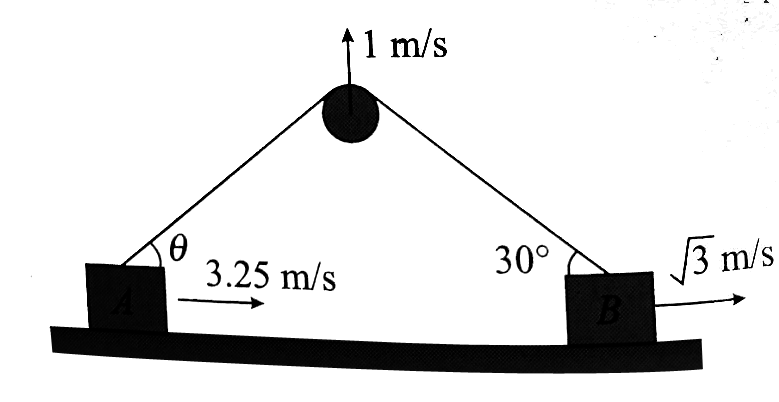
In the figure shown, find out the value of θ[assume string to be tight]Atan−1(3)4Btan−1(4)3Ctan−1(3)8Dnone of these - Question 2 - Select One
In the figure show , a person wants raise a block lying on the ground to a height h . In which case he has to exert more force. Assume pulleys and strings are light .
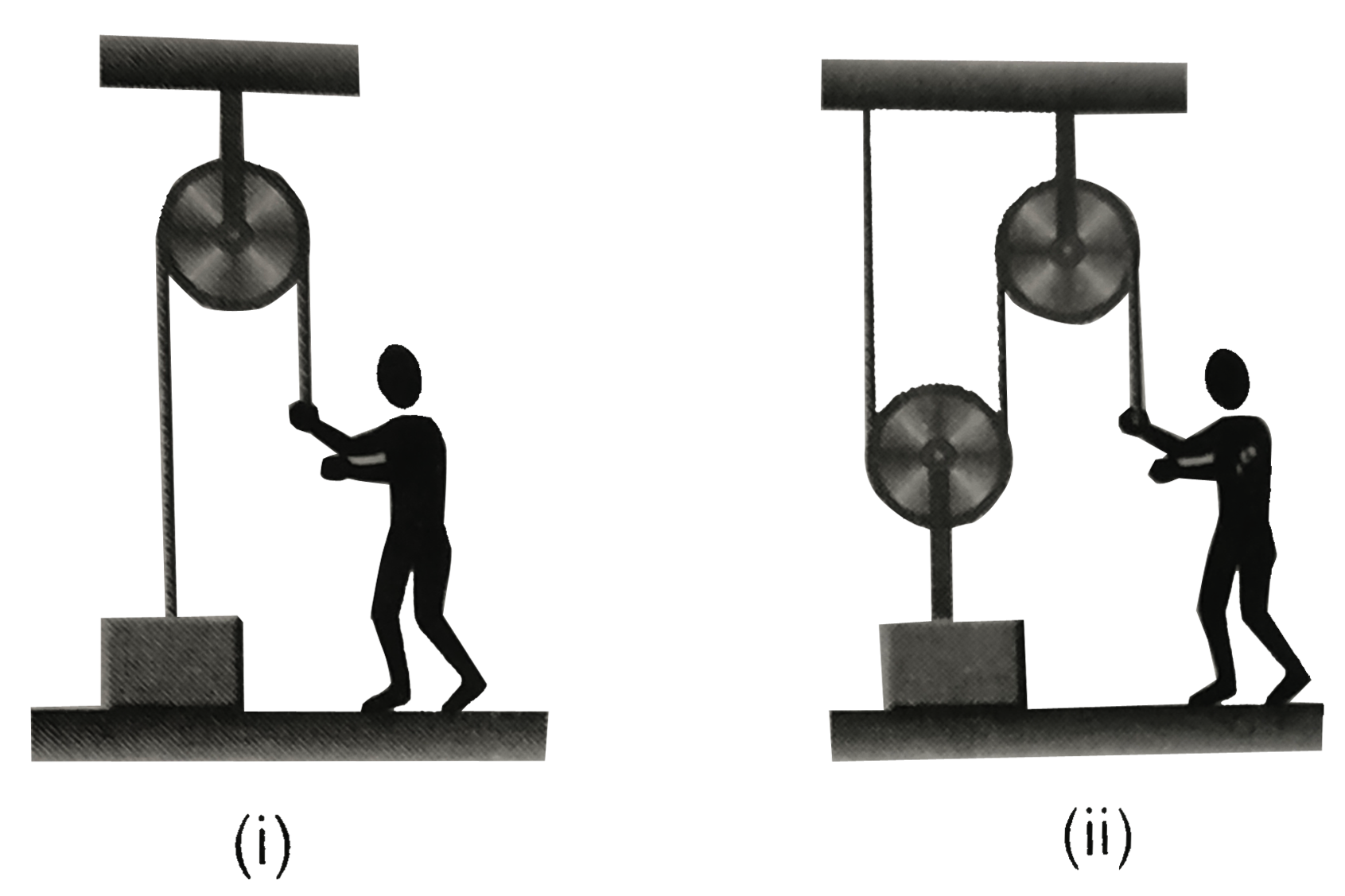 AFig (i)BFig (ii)CSame in bothDCannot be determined
AFig (i)BFig (ii)CSame in bothDCannot be determined - Question 3 - Select One
There blocks a,b and c of massses 10 kg ,10 kg and 20 kg respectivaly are arrenged as shown in figure all the surface are frictionless and string is inextensible A constant force F= 20N MN is applied on block a as shown .pulley and string are light . part of block a as shown . pulley and string are light . part of the string connecting both pulleys is vertical and part of hte stings connecting pulleys with masses a and b are horizontal .
 AAcceleration of block b 0.5m/s2BAcceleration of block b is 1m/s2CTension in the string is 10NDAcceleration of block c is 0.5m/s2
AAcceleration of block b 0.5m/s2BAcceleration of block b is 1m/s2CTension in the string is 10NDAcceleration of block c is 0.5m/s2
A situation is shown in figure-2.15, Find the acceleration of masses m1 abd m2 mass of pulley is mP. Consider the string going over the pulley is massless and frictionless.
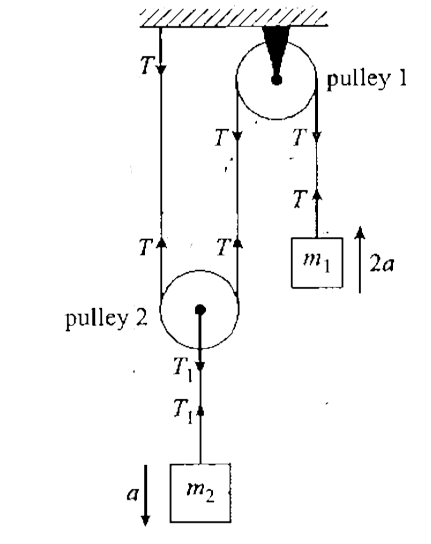 View Solution
View SolutionConsider the situation shown in figure. All the surfaces are frictions and the string and the pulley are light. Find the magnitude of the acceleration of the two blocks.
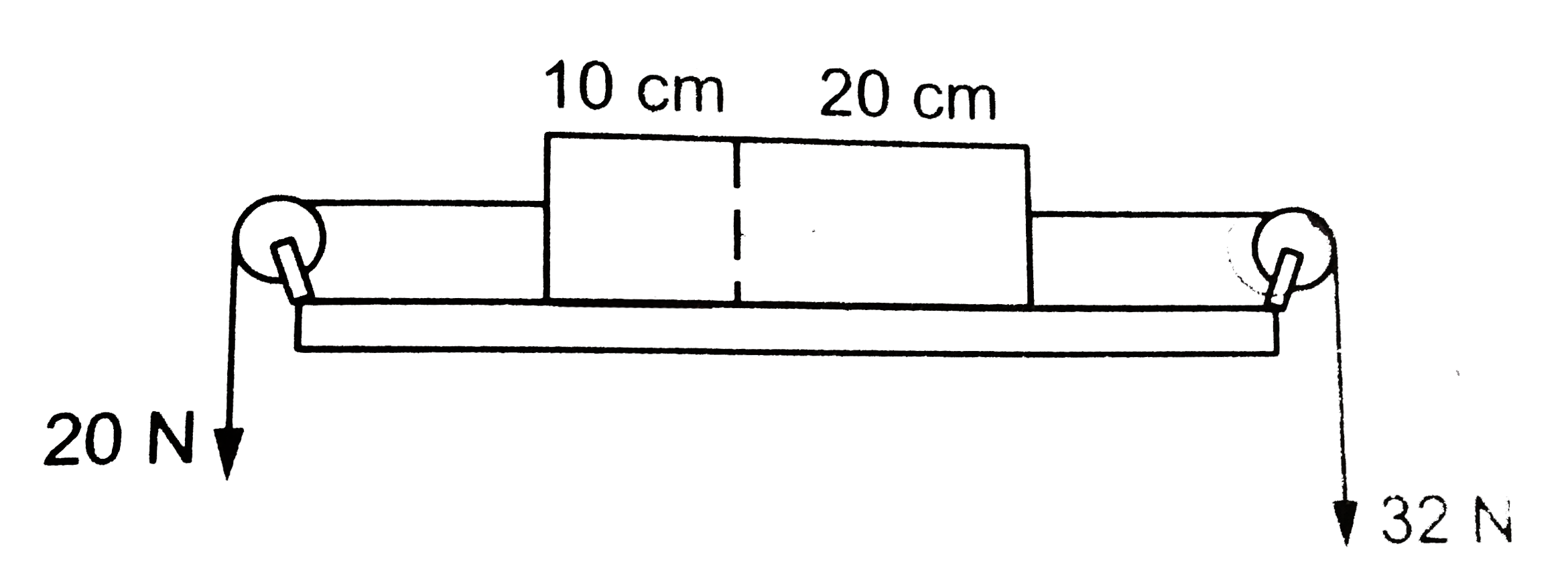 View Solution
View SolutionConsider two heavy right circular rollers of the radii R and r respectively and rest on a rough horizontal plane a shown in figure. The larger roller has a string wound around it to which a horizontal force P can be applied as shown. Assuming that the coefficient of friction m has the same value for all surfaces of contact, determine the necessary condition under which the larger roller can be pulled over the smaller one. Assume the smaller cylinder should neither roll nor slide.
 View Solution
View SolutionConsider4 the situation shown in figure. Bothe the pulleys and the string are light and all the surfaces are friction less. a. Find the acceleration of the mass M. b. Find the tension in the string c. Calculate the force exerted by the clamp on the pulley A in the figure.
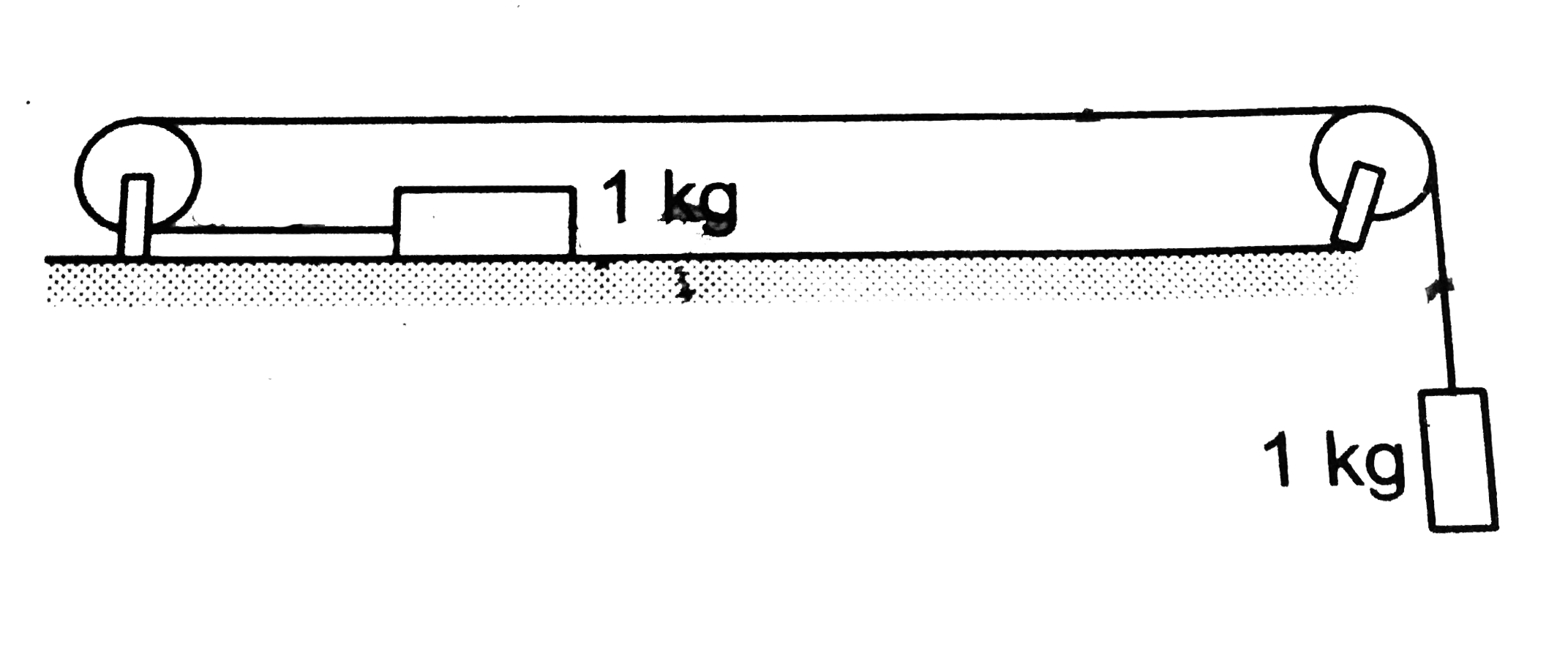 View Solution
View SolutionThree blocks of masses m1,m2 and M are arranged as shown in figure. All the surfaces are fricationless and string is inextensible. Pulleys are light. A constant force F is applied on block of mass m1. Pulleys and string are light. Part of the string connecting both pulleys is vertical and part of the strings connecting pulleys with masses m1 and m2 are horizontal.

(P)Accleration of mass m1(1)Fm1(Q)Acceleration of massm2(2)Fm1+m2(R)Acceleration of mass M(3)zero(S)Tension in the string(4)m2Fm1+m2View Solution

